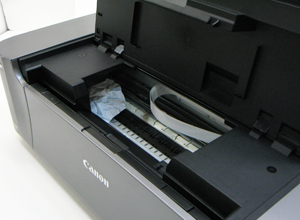What You Need To Know About Wire Tension Indicators & Wire Tension Gauge

Wire tension is a critical factor in various industries, including manufacturing, construction, and engineering. Accurate and consistent wire tension ensures wire-based systems’ integrity, performance, and safety. Professionals rely on wire tension indicators and wire tension gauges to achieve optimal wire tension. This blog post will explore these essential tools, their functions, and their significance in different applications.
Understanding Wire Tension:
Before diving into wire tension indicators and gauges, let’s first understand the concept of wire tension. Wire tension refers to the force applied to a wire or cable to maintain its desired level of tightness. Proper wire tension ensures efficient transmission of power, minimizes sagging or stretching, prevents wire breakage, and enhances overall system performance.
Significance of Wire Tension Indicators and Gauges:
Wire tension indicators and gauges play a crucial role in maintaining precise tension levels. Here’s why they are essential:
a. Accuracy: Wire tension indicators and gauges provide accurate measurements, enabling professionals to achieve consistent and desired tension levels. This accuracy helps prevent under-tensioning or over-tensioning, both of which can lead to performance issues or even catastrophic failures.
b. Safety: In industries where wire tension is crucial for structural stability or load-bearing capacity, maintaining the correct tension is vital for safety. Wire tension indicators and gauges help identify potential weaknesses or deviations from the desired tension, allowing for timely adjustments and avoiding potential accidents.
c. Quality Assurance: Wire tension affects the longevity and performance of wire-based systems. By using tension indicators and gauges, manufacturers can ensure that their products meet quality standards and customer expectations.
d. Preventive Maintenance: Regular monitoring of wire tension using these tools helps identify potential problems before they escalate. Timely adjustments or replacements can be made, reducing the risk of downtime, costly repairs, or accidents.
Key Features Of Wire Tension Indicators:
Wire tension indicators, also known as tension meters or tension testers, are handheld devices that measure the tension in a wire or cable. These instruments use different technologies such as load cells, strain gauges, or sonic measurements to assess tension accurately. Some key features of wire tension indicators include:
a. Portable and Easy to Use: Tension indicators are designed to be lightweight, handheld devices, making them portable and easy to use in various settings.
b. Digital Display: Most modern tension indicators feature digital displays, providing clear and precise tension readings for quick and accurate analysis.
c. Multiple Measurement Units: These tools often offer the flexibility to measure tension in different units, such as pounds-force (lbf), kilograms-force (kgf), or newtons (N), catering to specific industry requirements.
Key Features Of Wire Tension Gauges:
Wire tension gauges, also called tension meters or tension scales, are mechanical or electronic devices used to measure wire tension directly. They typically consist of a calibrated spring mechanism, a gauge, and a pointer to indicate the tension reading. Key features of wire tension gauges include:
a. Different Measurement Ranges: Wire tension gauges are available in various models with different tension measurement ranges. Professionals should select a gauge appropriate for their specific wire diameter and tension requirements.
b. Easy to Install: Wire tension gauges are generally easy to install on wires or cables, allowing for quick and convenient tension measurements.
c. Visual Tension Indication: Unlike tension indicators that provide digital readings, tension gauges offer a visual indication of tension levels through a pointer on a calibrated scale. This feature is helpful when precise tension values are not required.
Crucial To Follow The Instructions:
When using wire tension indicators and wire tension gauges, it is important to follow the manufacturer’s instructions carefully. Puretronics provide user-friendly guides to make it convenient for users.
– Regular maintenance and calibration of these tools are also important to ensure accurate readings and proper functioning. Calibration should be performed by a qualified technician.
Selecting The Right Wire Tension Indicator Or Gauge:
When it comes to selecting the right wire tension indicator and wire tension gauge, there are a few things to consider. First, you need to determine what type of wire you will be measuring and what level of accuracy you require.. You also need to consider the physical characteristics of the gauge, including its size and weight, as well as its durability and ease of use. The warranty and customer support offered by Puretronics make them stand out in the market and makes the choice easier for consumers. With a little research, you can find the right wire tension indicator and gauge to help you get the job done accurately and efficiently.


